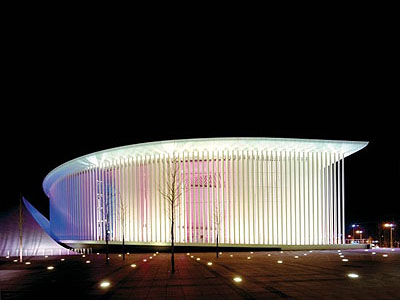By Rebecca Schmid
Last week at the Philharmonie featured the debut of the young conductor Joshua Weilerstein with the Deutsches Symphonie-Orchester Berlin alongside a guest appearance of Riccardo Chailly with the Berlin Philharmonic. It was an interesting opportunity to consider the qualities that can make or break a leader at the podium.
A rumoured candidate to take over the Philharmonic when Simon Rattle departs in 2018 (although he takes over as music director of La Scala this January and remains with the Gewandhausorchester Leipzig through 2020), Chailly is one of today’s most sought maestros, bringing elegance and authority to repertoire from Brahms, to Puccini, to Zemlinski.
The centerpiece of the evening, seen Nov.29, was Schumann’s Piano Concerto in A-minor with piano doyenne Martha Argerich. Perhaps today’s most seasoned interpreter of this work, she kept the orchestra in tow with hardly a glance toward Chailly. A combination of acute listening skills and perceptive body language allowed soloist and conductor to wander through Schumann’s imaginary landscape with emotional freedom but also relaxed precision.
Chailly infused the playing of the Philharmonic with fiery passion while never allowing focus to wane. The opening Allegro, vacillating between chamber-like dialogue and triumphant Romantic outbursts, captured the now playful, now demonic qualities of the work. Argerich’s gentle but incisive playing might have found a rounder counterpart in the strings during forte passages, but Chailly struck an ideal blend in the following Intermezzo, sculpting lines of beauty and tension.
In Mendelssohn’s Ruy Blas, a short overture based on the eponymous Victor Hugo play about the love story of 17th century Spanish Queen and her slave, the orchestra performed with an unusual level of enthusiasm and focus, clearly inspired by the maestro’s serene but firm air.
In Rachmaninov’s Third Symphony, which closed the program, he drew shapely phrases while maintaining incisive rhythms in this often densely contrapuntal score, now using swooping, downward gestures to keep energy flowing in the strings, now standing erect and thrusting his hands upward for blows in the brass.
While the composer’s musical ideas tend toward the long-winded, the score is a moving testament to his personal conflict in American exile, vacillating between mourning and exaltation, late Romanticism and neo-primitive simplicity. The macabre dance of the inner Adagio seethed with tension through every false cadence until the music wound down like a clock back to an earthly realm, with allusions to Orthodox church song in the plucked strings.
DSOB Debut
If the evening emphasized mature artistry at the highest level, the DSOB concert on Nov.26 was a test of young talent. Shostakovich’s First Violin Concerto, as performed by the up-and-coming soloist Diana Tishchenko under Weilerstein, emerged with mixed results.
Tishchenko revealed an intuitive grasp of the work, from her dark tone and understated vibrato in the searching lines of the opening movement, to her sweet sound in counterpoint with the woodwinds in the inner Passacaglia and her stamina through the harsh harmonics of the Cadenza, even if there were occasional intonation problems.
Weilerstein, despite holding the orchestra together with crisp rhythms and drive through fast passages such as the closing Burlesque, was not as confident a presence. The strings were not as homogenous as I have heard it on other occasions, particularly during the opening Nocturne, when he beat his baton with little emotional investment.
In Schumann’s Concert Piece for Four Horns and large Orchestra, he coordinated well with the soloists (Maciej Baranowski, Peter Müseler, Bertrand Chatenet, Juliane Grepling, blending impressively but with recurrent intonation problems) and built fine climaxes in the final movement. The strings’ flowing legato in the opening Lebhaft, however, had little to do with his gestures.
The programming of Tchaikovsky’s Francesca da Rimini was an unfortunate choice, as Weilerstein—at least based on this performance—does not yet have the emotional maturity necessary to shape this profound, sensuous work. The orchestral sections were not particularly well blended in the opening Andante (the blaring brass seemed intent on showing the young maestro who is boss throughout the work), and the music only scratched the surface of the story’s hellish passion.
Matters improved in the final two movements, with moments of tenderness in the Andante cantabile and elastic phrasing in the final Allegro which finally allowed Weilerstein’s musicality to shine through. Young conductors may need of opportunities to learn, but based on his insecure expression, Weilerstein did not appear to be enjoying himself—and surely that is an important ingredient in good music-making.
